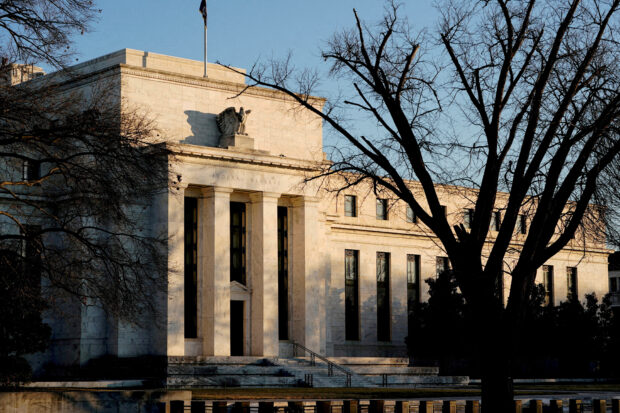Major central banks stand pat again in February

LONDON — February marked another static month for interest rates at major central banks with the much anticipated change of course in the global monetary policy expected to kick in later in the year while emerging market peers soldiered on with easing policy.
All four of the central banks overseeing the 10 most heavily traded currencies that held meetings in February – Australia, New Zealand, Sweden and the UK – kept benchmark lending rates unchanged.
The U.S. Federal Reserve, the European Central Bank, the Bank of Japan, the Bank of Canada, the Swiss National Bank and Norges Bank did not meet.
February marked the third straight month of no hikes from G10 central banks – the longest such streak since summer 2021.
Market focus is firmly on when major central banks could start easing policy with recent strong U.S. data having pushed expectations for a move by the Fed later into the year.
READ: Central banks navigate tricky path from rate hikes to cuts
“When we talk about economic re-acceleration, we are talking about U.S. re-acceleration – not global, and definitely not EU. So could the ECB actually go before the Fed?” said Mary-Therese Barton, CIO for fixed income at Pictet Asset Management.
Money markets show traders see a high chance both the ECB and Fed will start cutting rates in June, according to LSEG data, with a slightly higher probability for the ECB.
An exceptionally heavy election calendar, culminating in the November U.S. vote, added an extra layer of uncertainty, Barton added.
Emerging economies
Meanwhile, emerging economies – which have been ahead of their developed market peers on both the tightening and the easing cycle – continued their easing push, albeit at a slower pace.
“Emerging Market central banks are … outpacing their developed market counterparts in curbing inflation,” said Nicolas Forest, CIO at Candriam. “However, rising oil prices and resilient economies continue to put upward pressure on inflation, suggesting that central banks might adopt a slower pace in easing monetary policies.”
Out of the Reuters sample of 18 central banks in developing economies, 13 held rate setting meetings in February, though only two – in Hungary and the Czech Republic – cut rates. Indonesia, India, Korea, Mexico, Thailand, the Philippines, Israel and Poland all kept rates unchanged.
China’s central bank kept its key policy rate unchanged, but delivered a record reduction in its benchmark mortgage rate.
READ: China has more space to cut reserve ratio instead of interest rates
None of the emerging market central banks in the sample raised rates last month – the first such pause in at least three years.
Serial hikers Turkey and Russia – responsible for much of the hikes across developing economies in recent months as they battle high inflation and pressure on their currencies – kept rates unchanged.
The latest moves brought the year-to-date rate cut tally to 425 basis points, while the cumulative hikes totaled 250 bps.